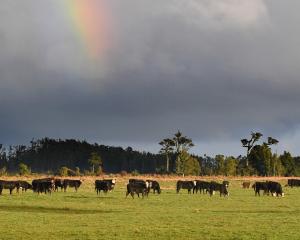New Zealand’s meat industry is facing stiffer competition as more countries export red meat to its biggest customer, China, the Meat Industry Association says.
Association chief executive Sirma Karapeeva said New Zealand’s red meat exports remained under pressure due to challenging global markets.
Red meat exports were worth $73 million in August 2023, a 16% drop on the same month last year.
The main decline was in exports to China, which were down 44% to $213m.
In contrast, exports to the United States were up 26% to $188m, and exports to Canada were up 136% to $40m.
The decline in overall exports partly reflects the fact last year was a record for exports in August, however New Zealand was also facing growing competition in China.
"Meat competition has increased significantly in China and there are now 42 countries exporting meat to the country — 30 for beef alone.
"The volume of Brazilian and other South American beef on the China market is significant and it is driving down the price overall. Likewise, Australian producers are exporting significant volumes of mutton to China at a low price. Conservative consumer spending is also driving down pricing.
"In the United Kingdom, we are now seeing the benefits of the UK-NZ Free Trade Agreement for beef exporters with an increase in volume and value compared to the same period last year.
"In North America, the United States is emerging from a drought and entering a herd rebuilding phase, which suggests a positive outlook for beef in that market for the future."
Compared to last August, the volume of overall sheepmeat exports increased by 6% to 25,162 tonnes but the value decreased by 13% to $236m.
The decline in value was mainly due to a decline in the value of exports to China, which were down 25% to $73m, compared to last August.
Sheepmeat exports to the other two major markets, the United States and the United Kingdom, increased compared to last
August, with the United States up 22% to $41m and the United Kingdom up 20% to $19m.
The volume of overall beef exports increased by 4% to 41,466 tonnes but the value decreased by 17% to $340m.
The main decline was in exports to China, which were down 37% by volume to 14,691 tonnes and 56% by value to $101m.
While this was a large drop, it was from a near record export volume and value to China last August.
Exports to the United States continues to recover from low levels last year as the drought in the US eases and domestic beef production drops. Compared to last August, exports to the US were up 118% by volume to 13,650 tonnes and 82% by value to $117m.
There was good demand in Canada, with the volume up 284% to 3192 tonnes and the value up 230% to $25m.
Over the first three months of the agreement from June, New Zealand had exported 653 tonnes of beef, worth $8.1m to the United Kingdom. This was an increase of 95% by volume and 117% by value, compared to the same period last year.
Before the agreement, these beef exports would have been subject to a tariff rate of at least 20%, so the sector has already seen tariff savings of about $1.6m.
New Zealand has a 12,000 tonne quota for the first year of the agreement, and the export volume in the first three months accounts for more than 5% of that quota.
While exports were growing, the use of the quota remained modest, Ms Karapeeva said.













